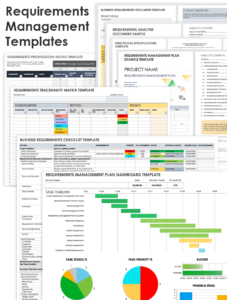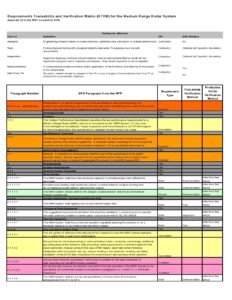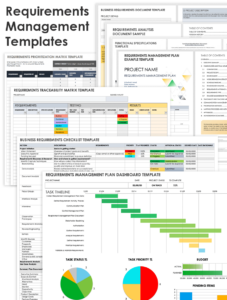In project management, it’s crucial to trace requirements throughout the project lifecycle to ensure they’re being met. A requirements traceability matrix (RTM) is a valuable tool that helps map requirements to other project artifacts, making it easier to track and manage them. An RTM template can provide a structured and customizable framework for creating and maintaining requirements traceability.
An RTM template for project management typically includes columns for requirements, their sources, the project deliverables they’re linked to, and their status. It allows you to establish clear traceability between requirements, design specifications, test cases, and other project documents. This helps ensure that all project deliverables are aligned with the project’s requirements and that any changes to requirements are propagated throughout the project.
Benefits of Using an RTM Template
Using a requirements traceability matrix template in project management offers numerous benefits. It enhances requirements traceability by providing a systematic approach to mapping and tracking requirements throughout the project lifecycle. This facilitates better communication and collaboration among project stakeholders, ensuring that everyone is on the same page regarding project requirements and their implementation.
An RTM template helps identify and mitigate potential risks early on. By linking requirements to project deliverables, you can analyze dependencies and assess the impact of changes. This enables proactive risk management, allowing you to take preventive actions and minimize the likelihood and impact of potential issues.
An RTM template promotes accountability and responsibility. By assigning ownership to specific requirements and deliverables, it becomes clear who is responsible for ensuring their completion. This enhances accountability and facilitates effective project coordination.
An RTM template ensures compliance with project standards and regulatory requirements. By documenting and tracking requirements, you can demonstrate traceability and compliance with project quality standards and industry regulations. This is especially important in safety-critical or highly regulated industries.
Steps for Using an RTM Template
Effective utilization of a requirements traceability matrix template involves several key steps. Firstly, identify and gather project requirements from various sources, such as stakeholder interviews, project documents, and business analysis. Secondly, create an RTM template that aligns with the project’s specific needs and includes relevant columns for requirements, sources, deliverables, and status.
Next, populate the RTM template by mapping requirements to project deliverables. This involves identifying the deliverables that address each requirement and establishing traceability links between them. Regularly review and update the RTM template as the project progresses and requirements change. This ensures that the traceability information remains accurate and up-to-date.
Conduct traceability analysis using the RTM template to identify gaps and inconsistencies in requirements implementation. This helps ensure that all requirements are covered by project deliverables and that any changes are propagated throughout the project.
Share and communicate the RTM template with project stakeholders to provide visibility into requirements traceability and facilitate effective collaboration. This promotes transparency and ensures that everyone is aware of the project’s requirements and their implementation status.
Conclusion
A requirements traceability matrix template is a powerful tool that streamlines project management by providing traceability between requirements and project deliverables. It enhances communication, risk management, accountability, and compliance. By implementing an RTM template, project managers can effectively manage requirements, mitigate risks, ensure stakeholder alignment, and deliver successful projects that meet customer expectations.
Remember that the effectiveness of a requirements traceability matrix template lies in its regular maintenance and utilization. By consistently updating and analyzing traceability information, project teams can ensure that all project deliverables are aligned with the project’s requirements, resulting in increased project success and stakeholder satisfaction.


